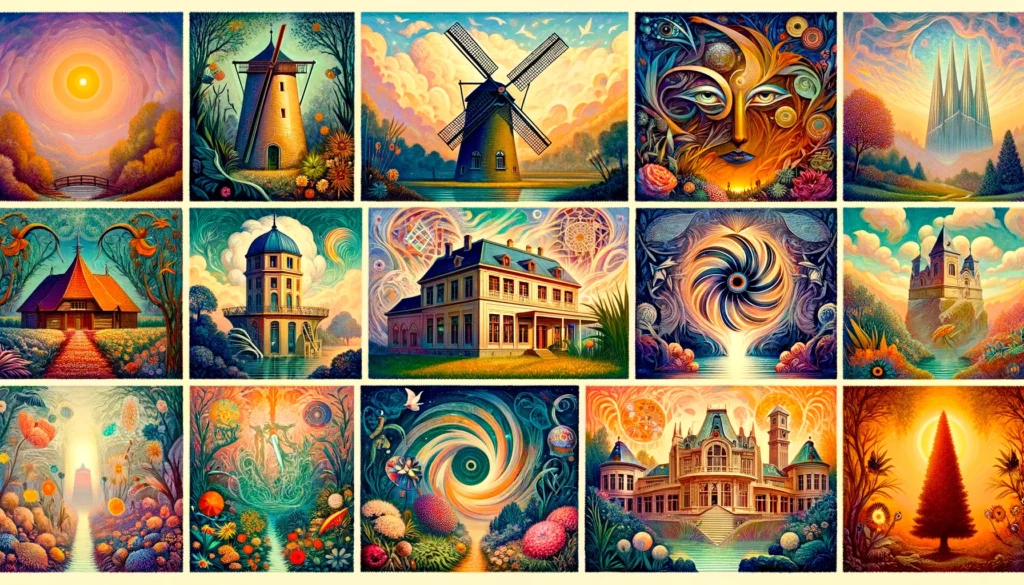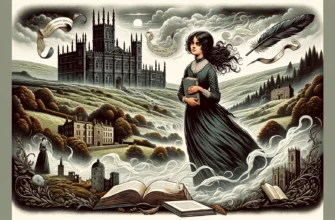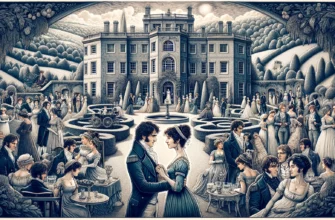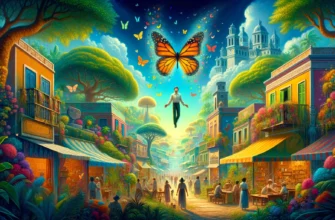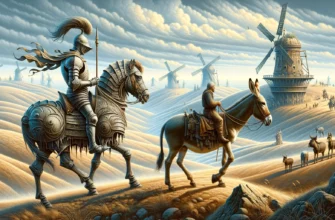Definition of a ‘Classic Novel’
A ‘classic novel‘ is often characterized by its enduring relevance, timeless quality, and ability to resonate with readers across generations. These works have stood the test of time, offering insights into the human condition, societal norms, and universal themes. Classic novels are not just relics of the past; they are mirrors reflecting humanity’s eternal struggles and joys.
The Timeless Appeal of Classic Literature
Classic literature holds a special place in the world of reading due to its ability to transcend the era in which it was written. These books provide a window into the past, allowing readers to experience life through the eyes of characters from different historical periods.
The themes explored in classic literature, such as love, war, friendship, betrayal, and the quest for meaning, continue to be relevant today, making these stories both relatable and profound.
Importance of Reading Classic Novels
Reading classic novels is not just about connecting with the past; it’s also a journey of personal growth and intellectual enrichment. These works challenge readers with complex characters and narratives, enhancing critical thinking and empathy.
Classic novels introduce us to diverse cultures, ideas, and philosophical perspectives, broadening our world understanding. By engaging with classic novels, readers gain historical and cultural knowledge and develop a deeper appreciation for the art of storytelling.
Best Classic Novels
- “Jane Eyre” by Charlotte Brontë
- “The Great Gatsby” by F. Scott Fitzgerald
- “Pride and Prejudice” by Jane Austen
- “One Hundred Years of Solitude” by Gabriel García Márquez
- “Don Quixote” by Miguel de Cervantes
- “The Stranger” by Albert Camus
- “Crime and Punishment” by Fyodor Dostoevsky
- “Moby-Dick” by Herman Melville
- “The Awakening” by Kate Chopin
- “Heart of Darkness” by Joseph Conrad
Gothic Romance and the Human Psyche: “Jane Eyre” by Charlotte Brontë
Examination of the Novel’s Gothic Elements and Romantic Plot
“Jane Eyre,” published under the pseudonym Currer Bell in 1847 by Smith, Elder & Co., weaves a narrative rich in gothic elements and deep romantic motifs.
Set in the gloomy estates of Thornfield Hall and Lowood School, the novel introduces readers to Jane Eyre’s harrowing journey from a bleak childhood to her complex relationship with the enigmatic Mr. Rochester.
The dark and foreboding atmosphere, supernatural elements, and a looming sense of mystery and danger perfectly encapsulate the gothic genre. At the same time, the central romantic plot delves into themes of love, morality, and redemption.
Discussion of the Novel’s Psychological Depth and Exploration of Identity
Charlotte Brontë‘s “Jane Eyre” is renowned for its profound psychological depth and keen exploration of the protagonist’s inner world. Jane Eyre emerges as a symbol of resilience and moral fortitude, navigating the rigid social hierarchies and gender norms of Victorian England.
The novel’s introspective narrative style vividly portrays Jane’s internal struggles and quest for identity, freedom, and self-respect, distinguishing it as a pioneering work exploring individual consciousness and emotional complexity.
Its Impact on Feminist Literature and the Bildungsroman Genre
“Jane Eyre” significantly developed feminist literature and the Bildungsroman genre. Brontë’s portrayal of Jane as an independent and strong-willed individual challenged the traditional representations of women in 19th-century literature, paving the way for future discussions on gender equality and women’s autonomy.
Furthermore, the novel’s focus on the protagonist’s moral and psychological growth from youth to adulthood established it as a quintessential example of the Bildungsroman genre, influencing countless coming-of-age narratives in the literary canon.
The American Dream Unraveled: “The Great Gatsby” by F. Scott Fitzgerald
Overview of the Jazz Age Setting and Plot
“The Great Gatsby,” published by Charles Scribner’s Sons in 1925, immerses readers in the luxury and disillusionment of the Jazz Age. The narrative of F. Scott Fitzgerald‘s novel is set against the backdrop of the affluent towns of West Egg and East Egg on Long Island, capturing the essence of the summer of 1922.
The narrative, told from Nick Carraway’s perspective, chronicles his encounters with the enigmatic millionaire Jay Gatsby and Gatsby’s obsessive pursuit of his former love, Daisy Buchanan.
The extravagant parties, the ostentatious displays of wealth, and the undercurrent of longing and decay paint a vivid picture of the Roaring Twenties.
Themes of Idealism, Decadence, and Social Upheaval
Fitzgerald’s “The Great Gatsby” is a poignant exploration of the American Dream and its discontents. The novel delves into themes of idealism, moral decay, and the pursuit of wealth, examining the hollow pursuit of material success and the elusive nature of the American Dream.
The characters’ complex relationships and personal ambitions reflect the era’s broader societal shifts and moral ambiguity. Fitzgerald’s incisive critique of the American upper class and his portrayal of the Jazz Age’s decadence offers a multifaceted examination of the social upheaval during the 1920s.
Fitzgerald’s Critique of the American Dream and Its Lasting Cultural Impact
“The Great Gatsby” stands as a seminal work in American literature, offering a critical examination of the American Dream and the ethos of the 1920s. Fitzgerald’s masterful characterizations, lyrical prose, and poignant symbolism have earned the novel a place as a classic of American literature.
Its themes continue to resonate, prompting ongoing discussions about wealth, success, and the elusive nature of happiness.
The novel’s adaptations in film, theater, and other media, along with its enduring presence in academic curricula, highlight its profound impact on American culture and its status as a timeless reflection on the complexities of the human experience.
The Tapestry of Social Commentary: “Pride and Prejudice” by Jane Austen
Overview of Plot and Setting
Set against the backdrop of rural England in the early 19th century, “Pride and Prejudice” was published by Thomas Egerton in 1813.
This novel delves into the life of Elizabeth Bennet, one of five sisters, as her encounter with the enigmatic Mr. Darcy’s character intricately weaves through the rich tapestry of etiquette, upbringing, moral values, education, and marital expectations prevalent among the British Regency’s landed gentry.
Analysis of Character Development and Social Critique
Jane Austen offers an incisive critique of the British gentry at the turn of the 19th century, articulated through the dynamic character of Elizabeth Bennet. The novel delves into themes of love, reputation, and class, challenging the societal norms of the time.
Austen’s narrative masterfully contrasts the character’s personal growth and moral rectitude with the superficiality and duplicity of the society they navigate.
Enduring Relevance in Contemporary Culture
Over two centuries after its publication, “Pride and Prejudice” continues to resonate with readers and adapt to new forms of media. The novel has seen numerous adaptations, from stage to film, and has inspired many literary works and cultural discussions.
Austen’s critique of societal norms and her emphasis on the importance of character and integrity remain profoundly relevant, ensuring that “Pride and Prejudice” retains its place not only in literary canon but also in the exploration of human relationships and societal structures.
Magic Realism and Cultural Identity: “One Hundred Years of Solitude” by Gabriel García Márquez
Exploration of the Magical Realism Genre
“One Hundred Years of Solitude,” published in 1967 by Editorial Sudamericana in Buenos Aires, is a seminal work in magic realism. Gabriel García Márquez crafts a narrative that seamlessly blends the mundane with the miraculous, the historical with the mythical.
The novel unfolds in the fictional town of Macondo and follows the multi-generational saga of the Buendía family. García Márquez’s vivid prose weaves a tapestry where time is cyclical, history is a chorus of repeating echoes, and reality is imbued with the supernatural.
Discussion of the Novel’s Portrayal of Latin American Culture and History
García Márquez’s masterpiece is a narrative feat and a profound commentary on Latin American culture and history. The novel reflects the region’s tumultuous history, marked by colonialism, political turmoil, and the constant struggle for identity and autonomy.
Through the lens of the Buendía family’s trials and tribulations, García Márquez critiques the repetitive nature of history and the pervasive sense of fatalism that characterizes the Latin American experience.
The novel’s rich tapestry of characters and events encapsulates Latin American life’s vibrant, often contradictory essence.
Impact on World Literature and Storytelling Techniques
Since its publication, “One Hundred Years of Solitude” has left an indelible mark on world literature, influencing storytelling techniques, narrative structure, and the thematic exploration of culture and history.
García Márquez’s innovative use of magical realism has inspired many authors worldwide, expanding the horizons of literary imagination. The novel’s translation into dozens of languages, its critical acclaim, including the Nobel Prize in Literature awarded to García Márquez in 1982, and its widespread inclusion in literary curricula underscore its global impact.
“One Hundred Years of Solitude” remains a testament to the power of literature to transcend cultural boundaries and to reflect the complexities, beauties, and paradoxes of human existence.
The Birth of Modern Narrative: “Don Quixote” by Miguel de Cervantes
Summary and Historical Context of “Don Quixote”
Miguel de Cervantes‘s Don Quixote was first published in two volumes in 1605 and 1615, marking a significant milestone in the evolution of literature.
This novel, emerging during the Spanish Golden Age, introduces readers to the complex and often comical adventures of Alonso Quixano.
After immersing himself in chivalric romances, Quixano becomes Don Quixote and begins a quest to revive chivalry, accompanied by his squire, Sancho Panza. This journey unfolds in the diverse landscapes of 16th-century Spain, offering a vivid tableau of the era’s social, cultural, and political milieu.
Exploration of its Themes and Narrative Style
“Don Quixote” is celebrated for its comedic elements and profound exploration of themes such as the nature of reality, the conflict between illusion and truth, and the decay of chivalric ideals.
Cervantes masterfully employs a pioneering narrative style, weaving a multi-layered story that challenges the conventional boundaries between the reader and the author, fiction, and reality.
This innovative approach positions “Don Quixote” as a precursor to later narrative techniques in modern literature.
Influence on Modern Literature and Storytelling
The impact of “Don Quixote” on the literary world is monumental. It is often cited as the first modern novel and has inspired many authors across centuries. The character of Don Quixote, with his idealism and tragicomic nature, has become emblematic of the human struggle against the mundane and the mediocre.
The novel’s narrative techniques and thematic depth have influenced various literary movements and genres, echoing through the works of subsequent writers and shaping the evolution of narrative art itself.
Existentialism and the Absurd: “The Stranger” by Albert Camus
Introduction to Existentialism and Absurdism through Camus’ Narrative
Published in 1942 by Éditions Gallimard, “The Stranger” (L’Étranger) is Albert Camus‘s profound entry into the realms of existentialism and absurdism.
The novel is set in French-colonized Algeria and follows the life of the protagonist, Meursault, a seemingly indifferent French Algerian who commits a senseless murder and faces the existential consequences of his actions.
Camus’s narrative is stark, straightforward, and deeply introspective, encapsulating his philosophy of the absurd — the notion that human life is inherently devoid of meaning, a concept that must be confronted and embraced.
Analysis of the Protagonist’s Emotional Detachment and its Philosophical Underpinnings
“The Stranger” is notable for exploring Meursault’s emotional detachment and the absurdity of his existence within a seemingly indifferent universe.
Camus delves into the psyche of Meursault, presenting a character who is profoundly disconnected from societal norms, moral judgments, and traditional emotional responses.
This portrayal challenges readers to reflect on the nature of justice, the societal pressures for conformity, and the individual’s quest for authentic existence in a world that demands rationality.
The Novel’s Role in the Development of Modern Existential Thought
Albert Camus’s “The Stranger” has played a pivotal role in shaping modern existential thought and literature. The novel’s stark portrayal of the absurdity of human existence and the protagonist’s confrontation with the meaning of life resonated with the post-World War II sentiment, marking a significant contribution to existential philosophy and literature.
Camus’s influence extended beyond literature, inspiring philosophical discourses, theatrical adaptations, and cinematic interpretations. The novel’s enduring relevance is evident in its continued academic and intellectual discussions, cementing its status as a cornerstone of existential literature and a profound commentary on the human condition.
Russian Realism and the Exploration of Morality: “Crime and Punishment” by Fyodor Dostoevsky
Summary of the Plot and Analysis of Main Characters
“Crime and Punishment,” first published in the literary journal “The Russian Messenger” in twelve monthly installments during 1866, is a profound exploration of morality and redemption. Fyodor Dostoevsky introduces readers to Rodion Raskolnikov, a destitute and desperate former student in St. Petersburg who commits a brutal double murder.
Published in “The Russian Messenger” throughout 1866, “Crime and Punishment” delves deeply into themes of morality and salvation. Fyodor Dostoevsky presents the story of Rodion Raskolnikov, an impoverished and distressed ex-student in St. Petersburg, who is driven to commit a heinous double homicide.
The novel intricately weaves Raskolnikov’s internal psychological turmoil with his external interactions, particularly with the astute detective Porfiry Petrovich and the compassionate Sonia Marmeladova, drawing a vivid picture of a man wrestling with guilt, moral justifications, and a desperate quest for redemption.
Dostoevsky’s Exploration of Moral Dilemmas and Psychological Realism
Dostoevsky’s “Crime and Punishment” is acclaimed for its in-depth psychological realism and intelligent exploration of complex moral dilemmas. The novel delves into Raskolnikov’s psyche, examining the intricate motivations behind his actions and his subsequent mental anguish.
Dostoevsky masterfully portrays the conflicting ideologies of the time—utilitarianism versus a more traditional Christian morality—and presents a profound philosophical discourse on the nature of crime, punishment, and the possibility of redemption.
Influence on Existential Philosophy and Psychological Fiction
“Crime and Punishment” significantly influenced the development of existential philosophy and psychological fiction. Dostoevsky’s portrayal of Raskolnikov’s existential angst and moral contemplations resonated deeply with later existential philosophers such as Jean-Paul Sartre and Friedrich Nietzsche.
The novel’s introspective and detailed psychological analysis laid the groundwork for modern psychological fiction, marking it as a seminal work that profoundly impacted literature and philosophy. The novel’s translations, critical studies, and adaptations in various media further attest to its enduring legacy and universal relevance across cultures and epochs.
The Odyssey of Isolation and Survival: “Moby-Dick” by Herman Melville
Narrative of the Epic Sea Adventure and Its Symbolic Undertones
Set against the vast backdrop of the open sea, “Moby-Dick” charts the obsessive quest of Captain Ahab to seek vengeance on the white whale, Moby-Dick.
This epic narrative, rich in nautical detail and mythic in scope, transcends a mere sea tale and evolves into a profound exploration of fate, obsession, and man’s place in the universe.
Melville’s intricate themes include the struggle against the mysterious forces of nature, the limits of knowledge, and the dichotomy of good and evil.
Melville’s Rich Literary Style and Philosophical Depth
Herman Melville‘s magnum opus is renowned for its elaborate narrative structure, symbolic complexity, and linguistic richness. The novel’s narrative is interspersed with monologues, scientific discussions, and philosophical meditations, making it a mosaic of different genres and styles.
Through the character of Ishmael, Melville examines the fundamental questions of existence, weaving a rich tapestry of ideas about identity, community, and the human soul’s resilience.
The Novel’s Place in American Literature and Its Broader Cultural Impact
Since its publication in 1851, “Moby-Dick” has ascended to the pinnacle of American literary canon, celebrated for its ambitious scope and profound depth.
Initially met with mixed reviews, the novel has since been recognized as a masterpiece of American literature, its themes and narrative techniques influencing generations of writers and artists.
The iconic image of the white whale and the monomaniacal Captain Ahab have permeated popular culture, symbolizing the relentless pursuit of an elusive goal and the human struggle against the overwhelming forces of nature and fate.
The Struggle for Personal Freedom: “The Awakening” by Kate Chopin
Exploration of the Novel’s Setting and Societal Context
Set in the picturesque locales of late 19th-century New Orleans and the Gulf of Mexico, “The Awakening” vividly portrays the upper-class Creole society.
The novel intricately maps Edna Pontellier’s journey against this backdrop, showcasing her gradual detachment from the societal norms and expectations of a woman, wife, and mother during the Victorian era.
Chopin’s Insightful Portrayal of Feminine Consciousness and Individuality
Kate Chopin delves deep into the psyche of Edna Pontellier, exploring the inner conflicts, desires, and the profound sense of isolation that drives her quest for self-discovery and artistic expression.
“The Awakening” is celebrated for its bold depiction of a woman’s assertion of her identity and sexual desires, challenging the conventional portrayal of women in literature and society at the time.
The Novel’s Impact on Feminist Literature and Modern American Thought
Upon its publication in 1899, “The Awakening” stirred controversy for its candid treatment of female sexuality and its critique of the prevailing social norms.
However, it was later embraced as a pioneering work in feminist literature, significantly contributing to the discourse on women’s rights and individual freedom.
The novel’s nuanced portrayal of the complexities of womanhood and its eloquent advocacy for personal and artistic freedom resonate profoundly in modern American literature and cultural discourse.
The Multifaceted Narrative of “Heart of Darkness” by Joseph Conrad
Delving Deep into the Congolese Interior: Setting and Narrative Structure
“Heart of Darkness” unfolds in the impenetrable jungles of the African Congo at the peak of European imperialism.
The narrative structure, a complex journey within a journey, frames Marlow’s harrowing voyage up the Congo River to retrieve Kurtz, a man whose ivory trading prowess and enigmatic persona have become almost legendary.
This journey is not just geographical but also a descent into the darkest corners of the human psyche and the grim realities of colonial exploitation.
Conrad’s Mastery of Narrative and Psychological Exploration
Joseph Conrad‘s narrative technique in “Heart of Darkness” is a masterclass in subtlety, complexity, and depth. The novella is narrated by Marlow, whose recounting of his journey to his fellow sailors on the Thames creates a layered, reflective narrative.
Conrad’s use of imagery and symbolism (notably through the recurring motif of darkness) and his probing into the characters’ psychological states craft a narrative that is more about the darkness of the African jungle than the darkness within human souls.
The Enduring Legacy and Controversial Impact of the Novella
Since its publication in 1899, “Heart of Darkness” has garnered acclaim and criticism in equal measure. Its stark depiction of colonialism’s horrors and nuanced portrayal of its characters’ moral ambiguities make it a cornerstone of modernist literature.
The novella’s intricate narrative and thematic depth have inspired numerous analyses, debates, and adaptations, including the acclaimed film “Apocalypse Now.”
However, its portrayal of Africa and Africans has also been a subject of intense discussion, positioning the novella as a seminal text in postcolonial studies.
This controversy only underscores the novella’s profound impact on both literature and the understanding of colonial history, making it an essential read for those seeking to comprehend the complexities of humanity’s darker inclinations.
Conclusion
Recap of the Unique Qualities and Contributions of Each Classic Novel
In this literary journey, we’ve traversed diverse landscapes, from the windmills of La Mancha with “Don Quixote” to the grand estates of Regency England in “Pride and Prejudice,” and from the gothic realms of “Jane Eyre” to the psychological labyrinths in “Crime and Punishment.”
We’ve witnessed the opulence and disillusionment of the Jazz Age in “The Great Gatsby,” grappled with existential dilemmas in “The Stranger,” and explored the rich tapestry of Latin American culture in “One Hundred Years of Solitude.”
Each classic novel offers a unique window into the human experience, reflecting life’s complexities, joys, and struggles across different eras and societies.
The Enduring Value of Classic Literature in Understanding Human Nature and Society
These classic books underscore classic literature’s enduring value in illuminating the depths of human nature and the intricacies of societal constructs. Through their narratives, characters, and themes, these novels invite readers into profound contemplations of love, morality, identity, and the quest for meaning.
They challenge perceptions, evoke empathy, and inspire introspection, proving that literature is not just an art form but a lens through which we can better understand ourselves and the world around us.
Encouragement to Readers to Delve into These Timeless Works
As we conclude this literary exploration, it’s clear that the journey through classic literature is not just a venture into the past; it’s an ongoing dialogue with the present and a gateway to the future.
Readers are encouraged to delve into these timeless works, uncover the layers of meaning, revel in the beauty of language, and engage with the universal themes that connect us across time and space.
Let these classic novels be your companions, guides, and portals to the vast, vibrant world of human experience. Whether revisiting these stories or discovering them for the first time, may your journey be as enriching as it is enlightening.
